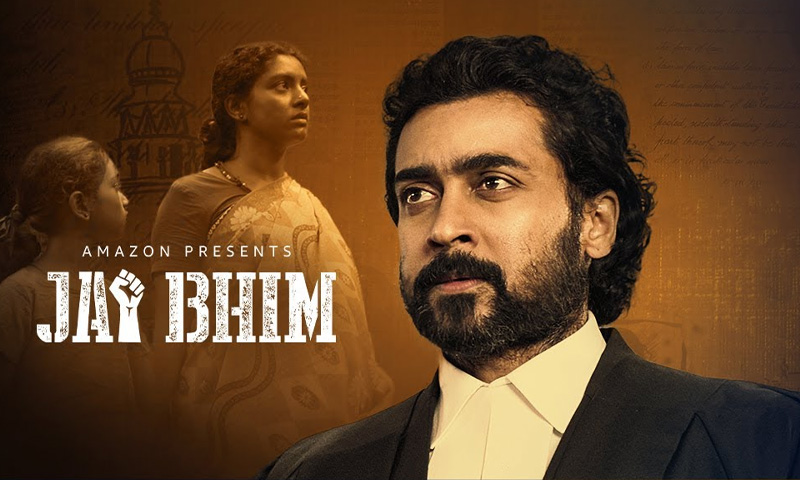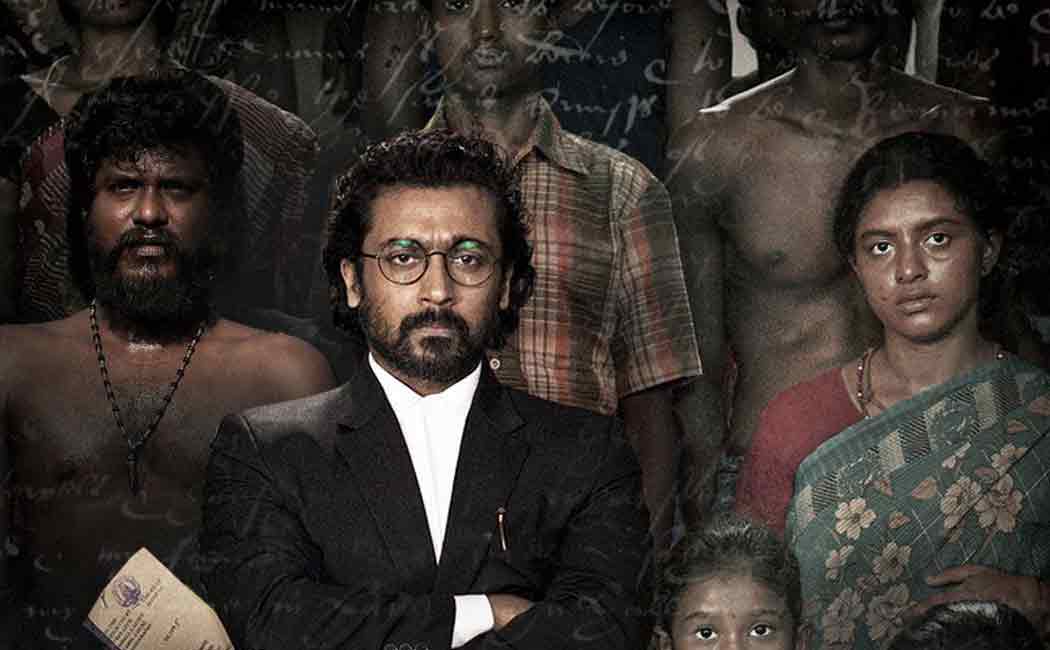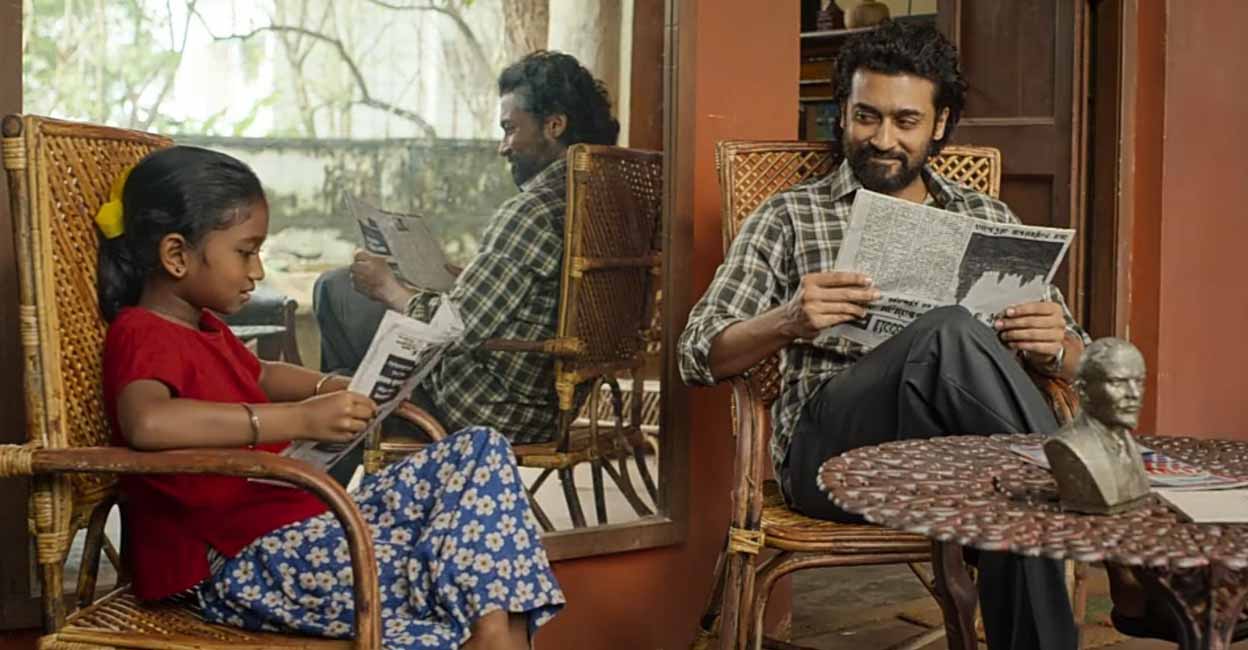Jai Bhim directed by T J Gnanavel, has captured the attention of a wider audience owing to its piercingly political title. While one could imagine the usage of the popular Ambedkarite slogan as a means to commodify Ambedkarite politics and hijack it for commercial purposes, a prolonged watch presents us with a more nuanced and debatable understanding of the film.
The opening scene articulately captures the primary premise the movie is based on. It brings to us the reality of a prejudiced State, that continues to co-opt the colonial construction that has categorised certain Scheduled Tribes in India as “habitual offenders”.
Mukul Kumar in their essay Caste and Crime in Colonial India writes that the Criminal Tribes Act (CTA) promulgated in 1871 by the British provided for the registration, surveillance and control of the criminal tribes and eunuchs in India. The procedure followed for notifying criminal tribes was arbitrary and once the tribe was categorised as ‘criminal’, the said accused would be denied any recourse to the judicial system.
The notification of such criminal tribes declared that the tribal community was “addicted” to crimes that were non-bailable then. The opening scene of Jai Bhim precisely hits on this colonial nostalgia of a redundant executive system that acts on the prejudices of a Brahmanical state by discriminating against the Koravas in Tamil Nadu and relentlessly carries forward the biases of the imperialists whose ‘western’ influence, a rejuvenated nationalism would supposedly despise.

Jai Bhim also sheds light on the issue of land ownership and entitlement among the tribal community in India. The tagging of tribals as ‘orphans’ signifies the position they have been coerced to occupy within the nation. It tells us how the Indian state has largely failed to serve the interests of the tribal community, stripping them off their identity as Indian citizens, let alone providing them access to any civic facilities such as residence, food ration and healthcare.
It is a commentary on a 21st century civilization which produces a mass of people who are left to live in a full bloom of their primitivity and are bereft from essential resources for sustenance in the midst of a modern nation-state. The film at various instances shows us the inordinate power endowed to the executive and administrative machinery that lousily sits and exploits on the interest of the Scheduled Tribes in India.
While the movie elaborately portrays the dehumanisation of the tribal communities in India, explicitly shown through horrific visuals, it does not comment on the complicity of the casteist society in the perpetuation of caste violence. Thus, though the identity of the survivors of crime is hyper-visibilised, the perpetrators are ‘casteless’ instruments of the State whose caste identity remains invisible
Another crucial issue covered in the film is the agony of police brutality and custodial violence against marginalised caste communities in India. While the case of such a barbarity of the police remains a persistent issue, the voyeuristic and sadistic representation of physical violence heavily displayed throughout Gnanavel’s Jai Bhim is uncalled for. The gore and violent graphics copiously woven in many of the scenes seem like an attempt to validate and justify an issue that is very much prevalent. They appear like a tacit attempt to convince the Savarna audience of the “realities” of the oppressed caste communities in India.
This aim to appease and cater to the Savarna viewership only garners sympathy that works to feed the oppressor’s guilt and leaves less scope for reflection among the elite caste audience. It takes away the agency from the person(s) whose lived experiences of suffering and torture become a sight to elevate the allyship morals of the oppressor.
Also read: Jai Bhim Film Review: Powerful Yet A ‘Voice For The Voiceless’ Narrative

Rajesh Rajamani in his interview with The Caravan comments on this very issue that can potentially make movies, one of them being Jai Bhim a “convenient formula” of a consumerist product that serves the guilt-free saviourship complex of the oppressor. In such cases, such movies may turn into conventional mainstreams and lose their political significance. Rajamani expresses a concern that might make such productions commercial products that fail to produce much reflection and dialogue in an upper caste society.
Further, while the film exposes the wrath of police brutality, it conveniently shows a very idealist representation of the Indian judiciary. It fails to elaborate on the hegemonic and undemocratic composition of the judiciary in India that overlooks the concerns of the marginalised caste and tribal communities. The Mathura and Bhanwari Devi rape cases are testaments to the perversion, casteism and sexism inflicted by the judiciary onto the oppressed caste women in India. The hostility and caste prejudice of the judicial system is reflected in many of its judgements.
Thus, the film fails to bring to light institutional forms of casteism perpetuated by the Indian judiciary. Hence, while it remarks on the physical violence inflicted by the State, it is complacent on the structural nature of violence that sustains the Brahmanical state. Perhaps, such understanding is discarded and less fostered with an intention to protect the upper caste hegemony, systemically maintained in India.
While the movie elaborately portrays the dehumanisation of the tribal communities in India, explicitly shown through horrific visuals, it does not comment on the complicity of the casteist society in the perpetuation of caste violence. Thus, though the identity of the survivors of crime is hyper-visibilised, the perpetrators are ‘casteless’ instruments of the State whose caste identity remains invisible.

Further, Jai Bhim depicts an enmity, a binary between us and them (Brahmanical State and the Irular community) in a peculiar scene when Advocate Chandu (now Justice) is called out by the tribal woman at Rajakannu’s (K. Manikandan) funeral for being responsible for the institutional murder of the men from the Irular community. It is here that the director powerfully captures and reiterates the antagonistic relationship between the tribals and the Brahmanical state which Advocate Chandru (Suriya) is a part of.
It translates into a saviourship project that works to liberate the ‘other’ from the tyranny of caste . Lastly, a crucial question to ask would be whether films like Jai Bhim that vividly capture caste atrocities and are exemplified as epitomes of ‘justice’, are truly instrumental in charging the Hindu society with any amount of culpability against the reality of caste in India
The film certainly produces an embedding of Ambedkarite ideology through various photo frames of Periyar, Ambedkar and Buddha, along with the recurring images of Marx and Lenin, signifying a left representation. Rajesh Rajamani argues that while these images may seem overt markers in most Tamil counter-cultural movies to the Savarna audience, they are perhaps images that are very naturally embedded in Bahujan lives.
Hence, not attaching undue significance to them, Rajamani on his Twitter handle expressed that even though the visual imagery of Ambedkar is not omnipresent in Jai Bhim, the very core of the movie is grounded in an Ambedkarite ideology.
Shifting the focus onto the narrative of the film, one realises that the sacrifice of marginalised lives is a prerequisite for a Savarna imagination of ‘justice’. In this case, Rajakannu’s custodial murder becomes a pre-condition for Sengini(Lijomol Jose) to seek ‘justice’ and a fact of conviction for the Savarna gatekeepers to believe that the Irular family is worthy of ‘justice’. Thus, we have seen time and again that institutional and custodial murders of the oppressed become conditions for invoking and elevating the moral consciousness of a casteist society.
Also read: ‘Dalit’ As A Visual Identity: Critiquing Savarna Hypocrisy Through Film And Literature

It is also important to understand that imagining an isolated case like the one in Jai Bhim as a beacon of hope for the oppressed would be a huge folly. The real life incident depicted in the film is an exception in a system that is rigged against the marginalised. Further, we can also observe that not much agency is assigned to both Rajakannu and Sengini who are at the receiving end of the system.
Instead, we see a lot of gratification attributed to the work of Advocate Chandru at the cost of Rajakannu’s life and Sengeni’s destitute conditions. While the biographical emphasis on the work of Advocate Chandru in the film is appreciated, juxtaposing it along an obscene portrayal of violence committed against the Irular community strips them off the agency over their lived experiences.
It translates into a saviourship project that works to liberate the ‘other’ from the tyranny of caste. Lastly, a crucial question to ask would be whether films like Jai Bhim that vividly capture caste atrocities and are exemplified as epitomes of ‘justice’, are truly instrumental in charging the Hindu society with any amount of culpability against the reality of caste in India.
Featured Image Source: The Indian Express
About the author(s)
Mansi Bhalerao is an Ambedkarite feminist, an undergraduate at Miranda House. She is an aspiring student of Sociology, trying to navigate and assert her praxis.




